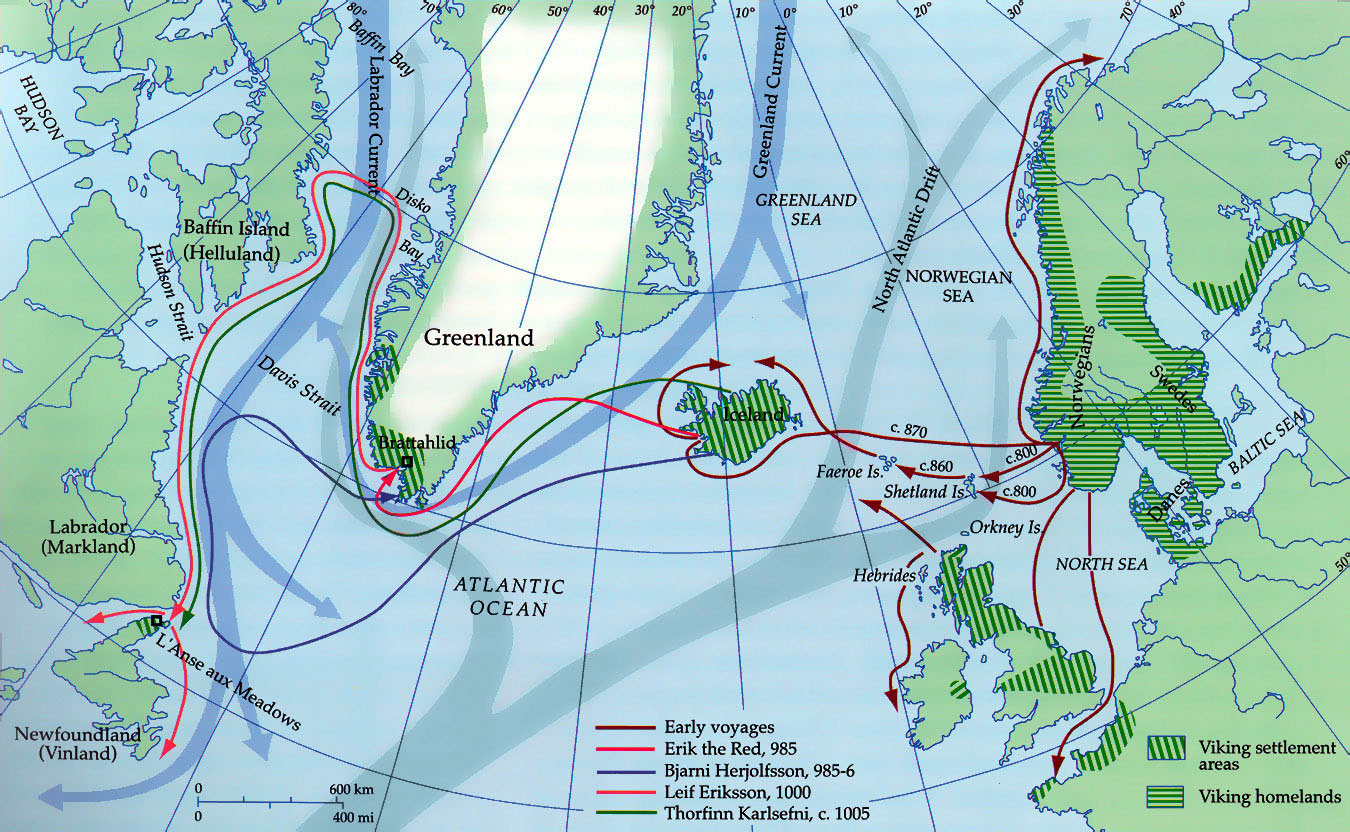
The Viking Age is the period from the 8th century to 11th century in European history. Vikings explored Europe and North America by its seas and rivers for trade, raids, and settlement. Though Viking travellers are generally viewed as raiders, their invasion of other territories may have been in response to the encroachment of others, overpopulation, trade inequities, and the lack of usable farmland.
In this period, the Vikings settled in Norway, Scotland, Faroe Islands, Iceland, Greenland, and all the way to Newfoundland.

According to Sagas, Iceland was discovered by Naddodd, a Viking from the Faroe Islands. While harsh, the land allowed for a pastoral farming life familiar to the Vikings. According to the saga of Erik the Red, when Erik was exiled from Iceland he sailed west and pioneered Greenland. The Viking settlements in Greenland were established in the sheltered fjords of the southern and western coast. Again while harsh, the climate along some fjords allowed for a pastoral lifestyle similar to that of Iceland.
The Vikings were equipped with technologically superior longships. The longships had two methods of propulsion: oars and sail. (launch system) The sail enabled the Vikings to use their longships to travel vast distances. (space craft) The ships' speed was impressive for the time, estimated at a maximum of 15 knots (28 km/h). Additionally, the ship's shallow draft enabled navigation in waters only one meter deep and permitted arbitrary beach landings. (landing system)
The Vikings were competent sailors. The nautical achievements of the Vikings were exceptional. For instance, they made distance tables for sea voyages that were remarkably precise. They have been found to differ only 2-4% from modern satellite measurements, even on such long distances as across the Atlantic Ocean.
The archaeological find known as the Visby lenses from the Swedish island of Gotland may be components of a telescope. It appears to date from long before the invention of the telescope in the 17th century. Recent evidence suggests that the Vikings also used the light-splitting and polarisation-filtering properties of Iceland spar to find the sun when it was obscured.
The Vikings also built structures out of turf and stone in terrain that had few if any trees. (rover) (terrarium)
The Vikings used the science, technology, and engineering of their age to travel great distances and setup farming in hostile climates. For mankind to become multiplanetary, we will need to use science, technology, and engineering to travel greater distances and to setup farming in even harsher environments.